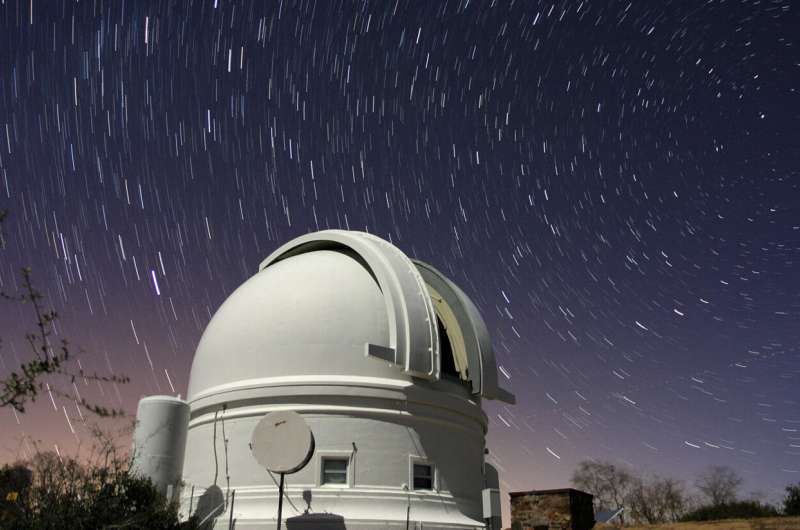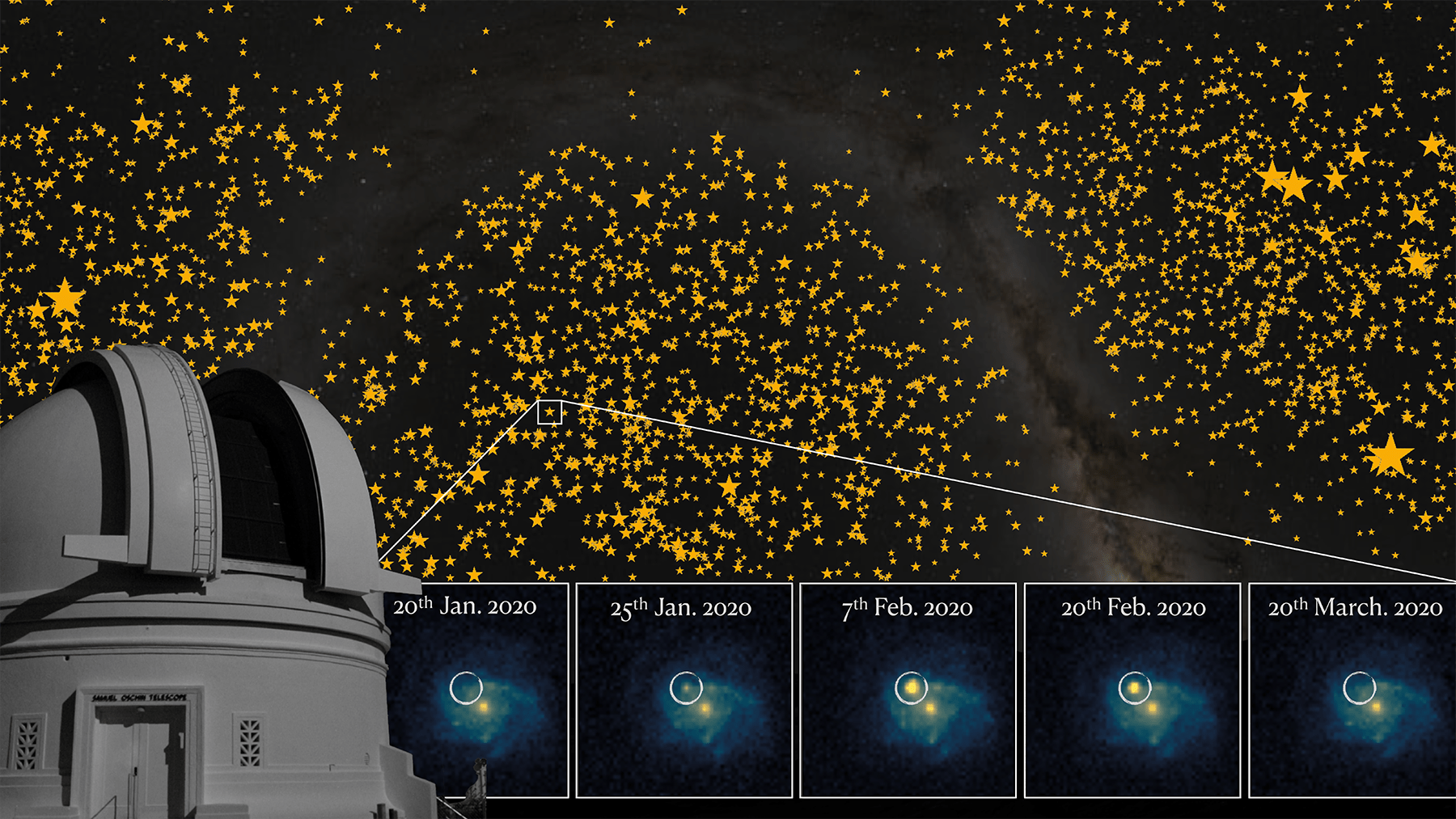The Zwicky Transient Facility Unveils sample of 3628 Type Ia Supernovae
A newly released, unique dataset of Type Ia Supernovae could alter how cosmologists measure the expansion history of the Universe. Dr. Mathew Smith and Dr. Georgios Dimitriadis, researchers at Lancaster University, are part of the Zwicky Transient Facility (ZTF), an astronomical survey dedicated to wide-field sky observations. The ZTF operates using a state-of-the-art camera integrated with the Samuel Oschin Telescope, located at the Palomar Observatory in California.
Type Ia Supernovae represent the explosive deaths of white dwarf stars as they reach the end stages of their lifecycles. Cosmologists rely on these events to measure cosmic distances by analyzing their flux; objects appearing dimmer are typically farther away.
On February 14th, 2025, the ZTF cosmology science working group released a collection of twenty-one research papers documenting 3,628 Type Ia Supernovae. These studies were compiled into a Special Issue of Astronomy & Astrophysics.

The ZTF Camera: A Unique Instrument
This marks the first time that astrophysicists have had access to such an extensive and uniform dataset. Type Ia supernovae are relatively uncommon, occurring about once every thousand years in an average galaxy. However, thanks to ZTF’s exceptional depth and strategic survey methods, researchers can identify nearly four of these events each night. In just two and a half years, the ZTF program has doubled the numbers of Type Ia supernovae cataloged for cosmological research over the past three decades, bringing the total to nearly 3,000.
The ZTF camera, mounted on the 48-inch Schmidt telescope at Palomar Observatory, surveys the entire northern sky every day across three optical bands, achieving a depth of 20.5 magnitudes—one million times fainter than the faintest stars visible to the naked eye. This exceptional sensitivity enables ZTF to detect almost all supernovae located within 1.5 billion light-years from Earth.

Head of the Zwicky Transient Facility (ZTF) Cosmology Science working group Dr Mickael Rigault from the Institut des deux Infinis de Lyon (CNRS / Claude Bernard University) said: “For the past five years, a group of thirty experts from around the world have collected, compiled, assembled, and analysed these data. We are now releasing it to the entire community. This sample is so unique in terms of size and homogeneity, that we expect it to significantly impact the field of Supernovae cosmology and to lead to many additional new discoveries in addition to results we have already published.”
Type Ia Supernovae and their Characteristics
Definition:
Type Ia supernovae (SNe Ia) are a type of stellar explosion that occurs when a white dwarf star in a binary system accumulates material from a companion star until it reaches a critical mass, triggering a thermonuclear explosion.
Characteristics of Type Ia Supernovae:
- White dwarf progenitor: SNe Ia occur when a white dwarf star, composed of carbon and oxygen, accumulates material from a companion star.
- Mass accumulation: The white dwarf accumulates material until it reaches the Chandrasekhar limit (approximately 1.4 solar masses), at which point the star undergoes a thermonuclear explosion.
- Thermonuclear explosion: The explosion is powered by the rapid burning of carbon and oxygen in the white dwarf’s core.
- Homogeneous composition: SNe Ia are thought to have a relatively homogeneous composition, which leads to a consistent maximum brightness.
- No hydrogen: SNe Ia do not show any hydrogen in their spectra, distinguishing them from other types of supernovae.
- Maximum brightness: SNe Ia typically reach a maximum brightness of around -19.3 magnitude, making them useful as “standard candles” for measuring cosmic distances.
Type Ia Supernovae and Expanding Universe
The discovery of the Universe’s accelerating expansion, which earned the Nobel Prize in 2011, was made in the late 1990s through observations of roughly a hundred Supernovae.
Since this groundbreaking revelation, cosmologists have been working to understand the cause of this acceleration, attributed to dark energy—a mysterious force acting as a counter to gravity throughout the Universe. To investigate this phenomenon, cosmologists analyze two critical factors: redshift, which refers to the stretching of a photon’s wavelength due to the Universe’s geometric expansion, and the brightness of Supernovae, which reveals the distance to the light source and, consequently, the time it takes for the photon to travel to Earth.
By examining these two factors together, cosmologists can trace the Universe’s expansion history and gain insights into the underlying physics driving this acceleration.
The precise characteristics of Type Ia supernovae are still not fully understood. Research involving their spectra and the changes in brightness over time, known as lightcurves, indicates that these events result from the thermonuclear explosion of a carbon-oxygen white dwarf, likely part of a binary or multiple star system. However, the reasons behind the explosion of this white dwarf, as well as how its makeup or that of its companion star affects the explosion process, remain uncertain. There may even be several pathways that lead to similar occurrences.
This raises an important question for cosmology: how reliable are the distance measurements obtained from the lightcurves of Type Ia supernovae, despite our limited understanding of these celestial objects?
This question has been the focus of the current ZTF release, “With this large and homogeneous dataset, we can explore Type Ia supernovae with an unprecedented level of precision and accuracy,” comments Dr. Mickael Rigault, “This is a crucial step toward honing the use of Type Ia Supernovae in cosmology and assess if current deviations in cosmology are due to new fundamental physics or unknown problem in the way we derive distances.”
Key Areas of Focus in the ZTF Release
To address this fundamental scientific inquiry, the ZTF team has concentrated on three key areas in this release.
-
Probing the Diversity of Type Ia Supernovae
Firstly, they examined the variability of Type Ia Supernovae events, unveiling sub-populations and extreme objects to probe the homogeneity of the core sample. This analysis helped clarify which Supernovae are most suitable for cosmological studies, as they are the most similar and reliable.
-
Tracing the causes of observed variations
Secondly, we probe how Type Ia Supernovae differ based on the characteristics of their environments, whether they are surrounded by young or old stellar populations, abundant interstellar dust, or are devoid of gas. This analysis helps us trace the root cause of the observed variations: are they tied to the material of the progenitor system, the time it takes for the progenitor star to evolve into a white dwarf and subsequently explode as a supernova, or are these differences more directly influenced by the interstellar materials along the line of sight in the host galaxy, such as interstellar dust?
Through this line of inquiry, we aim to refine the corrections for these observed variabilities, enabling the determination of accurate distances without requiring detailed knowledge of the intrinsic nature of the supernovae.
-
Probing the progenitor systems
Thirdly, the primary focus revolves around analyzing the early and late light curves, as well as the spectra uniquely obtained through ZTF, to investigate the physics of progenitor systems. Prof. Kate Maguire from Trinity College Dublin, a co-author of the study, emphasizes “Thanks to ZTF’s unique ability to scan the sky rapidly and deeply, we have captured multiple supernovae within days—or even hours—of explosion, providing novel constraints on how they end their lives.”
Prof. Ariel Goobar, co-author and director of the Oskar Klein Centre in Stockholm—one of ZTF’s founding institutions—who was also part of the team that identified the accelerated expansion of the Universe in 1998, further elaborates the objective. He states ultimately, the aim is to address one of our time’s biggest question in fundamental physics and cosmology, namely what is most of the Universe made of? For that we need the ZTF supernova data.”
Conclusion
One crucial result from these studies is the finding that Type Ia Supernovae exhibit inherent variations based on the characteristics of their host environments, to a greater extent than previously anticipated. As a result, the existing correction mechanisms used to account for these differences require reconsideration. This revelation could influence the way we determine the Universe’s expansion history and may hold significant implications for the current deviations noted in the standard cosmological model.
Lancaster astrophysicist Dr Mathew Smith, co-leader of the ZTF SN Ia DR2 release, said: “This release provides a game-changing dataset for supernova cosmology. It opens the door to new discoveries about both the expansion of the universe and the fundamental physics of supernovae.”